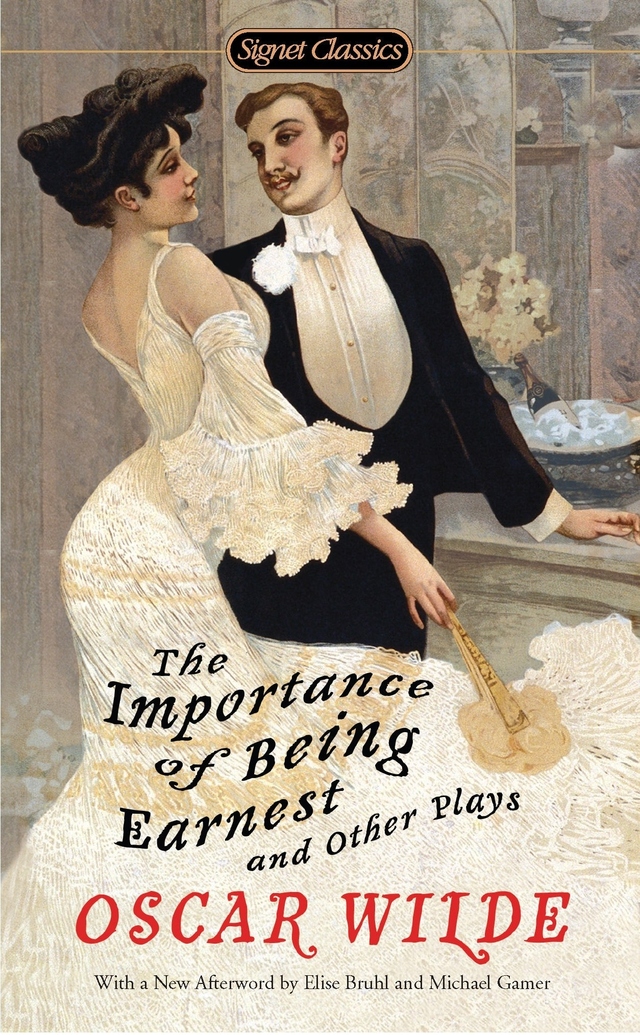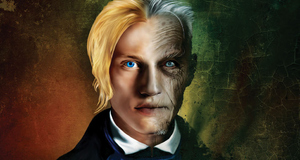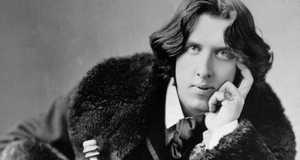Comparing Oscar Wilde's The Importance of Being Earnest and Henry James' Daisy Miller
By
2011, Vol. 3 No. 06 | pg. 1/1 Oscar Wilde's The Importance of Being Earnest and Henry James' Daisy Miller seemingly differ greatly in style. The forms--play and nouvelle--are of course different. Earnest is 'one of the great comedies in the English language' (Cave 419). Daisy is filled with rich opportunity for comedy ('whenever two people meet, there is apt to be a comedy of misunderstanding, and when people from different cultures meet, the chances are considerably multiplied' [Randall 568]). Yet James 'throw[s] away his […] comedy of manners' (Ohmann 452); the 'result' of his work 'is not […] comic' (Randall). It seems that in Earnest, Wilde is trying to make us laugh ('never were Wilde's epigrams and paradoxes funnier than here' [Breuer 232]), and that in Daisy James is not. It is notable that Wilde describes Earnest as a 'comedy' (291), while James originally qualified Daisy as a 'study' in the title (3). As in Shakespeare, Earnest ends in marriage (or at least the prospect of it), and is considered a comedy; Daisy ends in the title character's death, and may therefore be arguably classed as tragedy. The two texts are, however, very similar in terms of subject matter. Both are biting social criticism, the narratives of each driven by the workings of society. Earnest and Daisy expose the failings and absurdities of the upper social echelons.Wilde says: 'in matters of grave importance, style, not sincerity is the vital thing.' Society is the 'matter[…] of grave importance' at hand in Earnest and Daisy, and critics seem to agree that Wilde and James both succeed in their works' respective criticism of it. Their very different treatments of the subject lead us to question the validity of Wilde's epithet. Does it imply that Daisy, the perhaps more 'sincere' of the two texts, is less effective than Earnest? Is Earnest insincere and Daisy lacking in style? A study of the works and the philosophies of writing behind them is perhaps necessary. Wilde assumes, in writing that 'style, not sincerity is the vital thing' 'in matters of grave importance', that style and sincerity are in some way opposed. Can sincerity not be achieved through style? One definition for the word 'style' in the OED states that, 'in [a] generalised sense', style consists of 'those features of literary composition which belong to the form and expression rather than to the substance of the thought or matter expressed'. Surely, then, sincerity is a manner of expression? Another definition is 'the manner of expression characteristic of a particular writer […], or of a literary group or period; a writer's mode of expression considered in regard to clearness, effectiveness, beauty and the like.' When considering Wilde's individual style, and the collective manner of expression of the Aesthetic school to which he belongs, the incompatibility of the two terms for him becomes a little clearer. Earnest's witty, light-hearted criticisms of social convention are certainly insincere in style, and Wilde's usage of the term is perhaps best illustrated by one more definition from the OED: 'beauty or loftiness of style'. Significantly, the example the dictionary gives of 'style's use in this manner is from a nineteenth century art scholar, Fuseli. In his essay “The Decay of Lying”, where Wilde briefly outlines many of his Aesthetic beliefs that inform his writing, he arrives at this final doctrine: 'Lying, the telling of beautiful untrue things, is the proper aim of Art' (87). Before arriving at this conclusion, he argues at great length that beauty achieved through expression in Fuselian style over realism ('as a method Realism is a complete failure' [86]). Here he offers the 'case of the English drama': At first in the hands of the monks Dramatic Art was abstract, decorative and mythological. Then she enlisted Life in her service, and using some of Life's external forms, she created an entirely new race of beings, whose sorrows were more terrible than any sorrow […] whose joys were keener than lover's joys […] to them she gave a language different from that of actual use […] jewelled with wonderful words, and enriched with lofty diction[…] Art itself is really a form of exaggeration; and selection, which is the very spirit of art, is nothing more than an intensified over-emphasis (68). It is worth quoting Wilde's ideas regarding drama at such length as they are to be found exhibited in Earnest perfectly. Each character is a wonderfully comic exaggeration, their dialogue uncommonly sparkling (compared with real life). Wilde is not interested in providing us with the sincerity of realism, when he is utterly sincere in his painterly style, a presentation of aesthetically beautiful lies. Criticism of the upper classes and the workings of society is achieved, then, through hyperbolic characters and dialogue. Take, for example, Algernon. He observes that 'the only way to behave to a woman is to make love to her, if she is pretty, and to someone else if she is plain' (313), and that 'the amount of women in London who flirt with their own husbands is perfectly scandalous' (302). The critic Sale states that the speeches of 'Act 1. Algernon' (he notes how Algernon changes throughout the acts) 'are all jokes, and most have subtexts about dirty linen, where marriages are made, etc.' (478). It is, of course, unrealistic to have a character whose speeches are 'all jokes', yet in writing one Wilde is making the play funnier. Algernon speaks in the language 'different from that of actual use' to make the audience laugh; he speaks of 'where marriages are made' as marriage is one of the play's main themes, and the vehicle through which Wilde voices his social criticism. Wilde also criticises through the character of Lady Bracknell, who has, as Sale puts it, 'no jokes […] because everything is reason for outrage' (478). Lady Bracknell's is 'the dowager role […] dominant and […] shrewdly financial' (Foster 19): she is the formidable enforcer of high society's rules, quizzing Jack on his background to deem him worthy of marrying her daughter ('Do you smoke?[…] I am glad to hear it. A man must have an occupation of some kind[…] what is your income?' [308-9]). While she may have no jokes, Foster is certainly correct in deeming her 'dominant', and Cave writes that 'critical attention and audience enthusiasm have increasingly focused on the performance of the actress playing Lady Bracknell, as if this affords the benchmark by which the whole production […] is to be judged' (420). An apt term for her is 'larger than life', as she is certainly another example of Wilde's 'intensified over-emphasis'. The comedy of Earnest draws upon that matter of grave importance, society, and all of its failings and foibles. In this mockery, Wilde is sincere; yet in his style (that is, his delivery) he is 'lighter than air' (Sale 480). His Fuselian understanding of style, however, means that there is sincerity in the lightness: the fact that the play entertains signifies that Wilde's Aesthetic ideals succeed. Wilde seems to endorse a sincerity of style in “Decay of Lying”, and it can be inferred that while Earnest may have a prevailing insincere tone, with insincerity even forming the crucial elements of the plot (in 'Bunburying') it is still a sincere work of art. Said insincere tone is most likely the reason that Earnest was a 'triumphant success' (Cave 419) and played to packed houses, while Daisy Miller was considered an 'outrage on American girlhood' (Rahv 442) meeting originally with 'indignation [… with] writers on etiquette us[ing] Daisy as a horrible example of vulgarity' (Dunbar 311). James' own philosophy of writing was considerably different to Wilde's and so while his social critique shares many elements with Earnest (such as a societal rules-enforcing aunt, Mrs. Costello), the tone and style of the texts contrast markedly. This philosophy of writing is noted down in his essay “The Art of Fiction”, where he writes: 'the only reason for the existence of a novel is that it does attempt to represent life' (346). Referring to maxims laid down by the writer Besant, he continues: 'the novelist must write from his experience, that his characters must be real and such as might be met with in actual life […] these are principles with most of which it is impossible not to sympathise' (350-1). What James' principles seem to be working toward is sincerity. Fiction 'must take itself seriously for the public to take it seriously' (346). This philosophy leads us to Daisy's entirely distinct social criticism: the story of an American girl who does not follow the strict social conventions of Rome, walking with two men unchaperoned (“You are old enough, dear Miss Miller, to be talked about.” “Talked about? What do you mean?” [33]), mixing with the servants (“They treat the courier like a familiar friend” [14]) and accompanying a foppish Roman to the Coliseum at night, which leads to her succumbing to malaria and dying. Winterbourne realises, upon seeing Daisy and Giovanelli in the Coliseum, that 'she was a young lady whom a gentleman need no longer be at pains to respect' (46). At the beginning of the nouvelle, Mrs. Costello declares that “they are the type of Americans that one does one's duty by […] not accepting” (13). James' martyrdom of Daisy and ambiguous narrative viewpoint (third person, but focusing on Winterbourne's perception of her) invites the reader to empathise with her. This is what made 'reviewing Yankees […] furious with her' (Randall 569) at first; Daisy's current critical acclaim springs from much the same reasons. Yet just as sincerity is present in Earnest, so a stylisation creeps into Daisy. Although James was a vocal proponent of realism, it is arguably elements of Aestheticism that make Daisy a successful social critique (and work of fiction). In his preface to Daisy, James recounts the experience that inspired the character of Daisy: 'a friend […] happened to mention… some […] American lady of the previous winter, whose young daughter […] had “picked up” by the wayside, with the best conscience in the world, a good-looking Roman' (368). Here is the raw material required for James' realism. However, he goes on to state that after writing the piece, he was confronted by a friend in Italy for ascribing charm to such a social outsider: 'those awful young women capering at the hotel door, they are the real little Daisy Millers that were; whereas yours […] couldn't have been at all' (370). James' response? 'My supposedly typical little figure was of course pure poetry, and had never been anything else; since this is what helpful imagination, in however slight a dose, ever directly makes for'. Daisy, then, could not be met 'such as […] in real life'; she is 'pure poetry', art for art's sake, a figure that 'couldn't have been at all'. According to Rahv, 'one cannot say […] that in the main it is the quantity of “real life” in Daisy Miller which accounts for her vitality [… she is] the mere imitation of life' (443). In other words, she is a figure that James endows with style. It may seem that in comparing Wilde and James in an essay considering style and sincerity is to pit the two literary rivals against each other: that it is a case of style versus sincerity, Aestheticism versus realism, The Importance of Being Earnest versus Daisy Miller. But it is not. Earnest and Daisy are equally sincere works of art, and Fuselian style is present in both. In saying that style is more 'vital' than sincerity, Wilde ignores the sincerity that is present in his own work: the subject matter of societal criticism that he embellishes with his own particular style to make Earnest entertaining. Realism is present in Earnest, in that its audience understands and recognises what Wilde satirises. James relied on elements of aestheticism to add style to his own ambiguous nouvelle. A comparison of Earnest and Daisy hopefully shows the two texts existing not as complete opposites, with a chasm of difference between them, but rather as akin to negatives of a photograph. While the sincerity of the highly stylised Earnest may be less prominent than in Daisy, with its sincere tone and muted stylisation, style and sincerity work together in both texts to create successful portrayals of the 'grave matter' of societal criticism. Style and sincerity are vital. References---. 'Daisy Miller: A Study.' The Tales of Henry James. Ed. Wegelin, Christof. New York: Norton, 1984: 3-50. ---. 'On Daisy Miller.' The Tales of Henry James. Ed. Wegelin, Christof. New York: Norton, 1984: 368-370. ---. 'The Importance of Being Earnest.' The Importance of Being Earnest and Other Plays. Ed. Cave, Richard Allen. London: Penguin, 2000: 295-358. Breuer, Rolf. 'Paradox in Oscar Wilde.' Irish University Review, 23.2 (Autumn-Winter, 1993): 224-235. Cave, Richard Allen. Notes. The Importance of Being Earnest and other Plays. By Oscar Wilde. Ed. Cave, Richard Allen. London: Penguin, 2000. 419-430. Dunbar, Viola R. 'The Revision of Daisy Miller.' Modern Language Notes, 65.5 (May, 1950): 311-317. Foster, Richard. 'Wilde as Parodist: A Second Look at the Importance of Being Earnest.' College English, 18.1 (October, 1956): 18-23. James, Henry. 'The Art of Fiction.' The Tales of Henry James. Ed. Wegelin, Christof. New York: Norton, 1984. 345-362. Ohmann, Carol. 'Daisy Miller: A Study of Changing Intentions'. The Tales of Henry James. Ed. Wegelin, Christof. New York: Norton, 1984: 443-452. Rahv, Philip. 'Daisy Miller'. The Tales of Henry James. Ed: Wegelin, Christof. New York: Norton, 1984. 442-443. Randall III, John H. 'The Genteel Reader and Daisy Miller.' American Quarterly, 17.3 (Autumn, 1965): 568-581. Sale, Roger. 'Being Earnest.' The Hudson Review, 56.3 (Autumn, 2003): 475-484. Wilde, Oscar. 'The Decay of Lying.' De Profundis and Other Writings. London: Penguin, 1986: 55-87. Suggested Reading from Inquiries Journal
Inquiries Journal provides undergraduate and graduate students around the world a platform for the wide dissemination of academic work over a range of core disciplines. Representing the work of students from hundreds of institutions around the globe, Inquiries Journal's large database of academic articles is completely free. Learn more | Blog | Submit Latest in Literature |

















